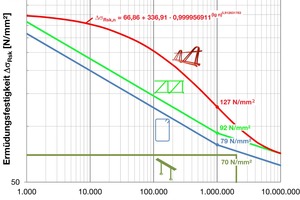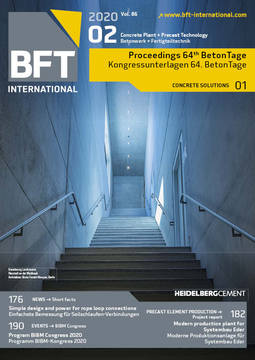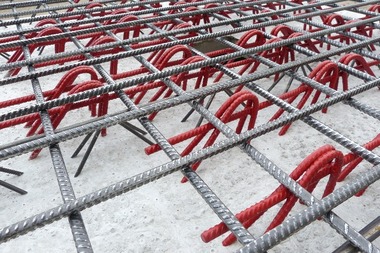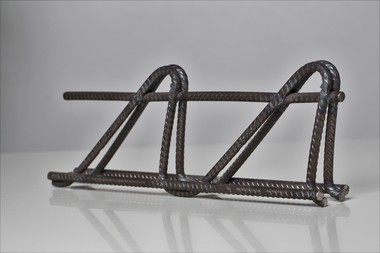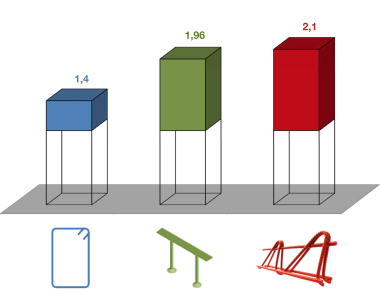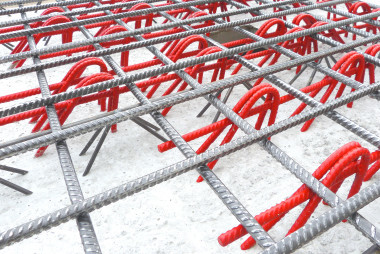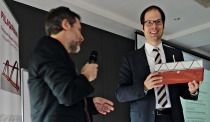Verification concept on the basis of S-N curves
A verification against fatigue must be provided for reinforced concrete floors under frequently recurring stress, e.g., due to forklift truck traffic. This also applies to structural components reinforced by lattice girders or punching shear reinforcement. Currently, S-N curves have been determined experimentally for both lattices girders and a special punching shear reinforcement. The fatigue resistances were determined in fatigue tests carried out on reinforcement sections embedded in concrete, taking the weld knots into account. These different fatigue resistances for lattice girders in accordance with the national technical approval Z-15.1-93 [1] as well as for Filigran punching shear reinforcement in accordance with the European Technical Assessment ETA-13/0521 [2] deviate from other reinforcement elements such as stirrups or double-headed studs (Fig.). The S-N curves determined, moreover, enable fatigue verifications for specified load cycles as well as operational strength verifications by damage-equivalent stress ranges analogous to Eurocode 2.
In addition to the fatigue verification of the reinforcement, a verification against concrete fatigue must be provided for reinforced concrete components. This reduces the maximum shear resistance. In case of precast floor slabs with lattice girders as composite reinforcement or shear reinforcement an overall reduction is applied. The upper limit is to be reduced on the basis of a Goodman diagram according to the explanations given in guideline volume 600 of the German Committee for Reinforced Concrete (Deutscher Ausschuss für Stahlbeton, DAfStb). This verification must be provided for precast floor slabs as well as cast-in-situ slabs irrespective of the reinforcement system used. Depending on the number of load cycles, this verification was specified more precisely for the Filigran punching shear reinforcement. In this way, a more efficient and more reliable design is possible, depending on the acting load cycles. For providing the verification, a design program [3] is available for user.

